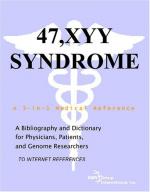|
This section contains 489 words (approx. 2 pages at 300 words per page) |

|
The XYY karyotype was first described in a 1965 study of 197 males in a Scottish maximum-security prison. The study's findings indicated that 4.5% of the violent offenders studied had the XYY karyotype. Subsequent surveys by other researchers indicated a higher frequency of XYY males in prison and mental institution populations than in the general population. These findings lead early investigators to conclude that some forms of violent behavior and mental illness were associated with the presence of the extra Y chromosome and thus the XYY criminal syndrome was born.
The chromosome complement of a genotypically normal human includes 22 pairs of autosomal (body cell) chromosomes plus one pair of sex chromosomes. During mitosis, each of these 46 chromosomes are replicated and randomly distributed into daughter cells such that each new daughter cell contains 46 chromosomes. The reductive form of cell division, meiosis, results in the production of daughter cells...
|
This section contains 489 words (approx. 2 pages at 300 words per page) |

|


